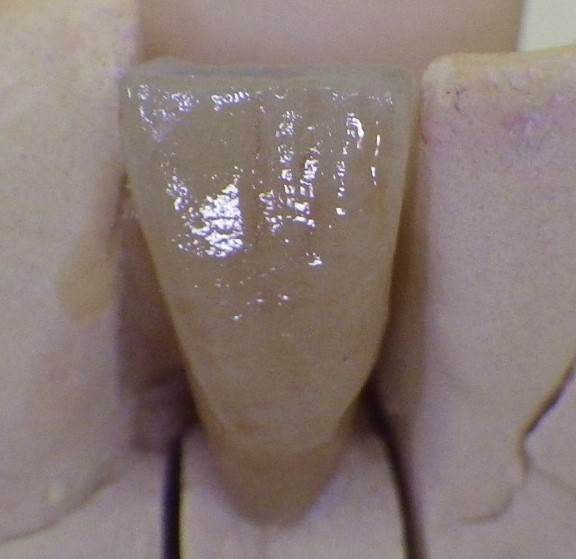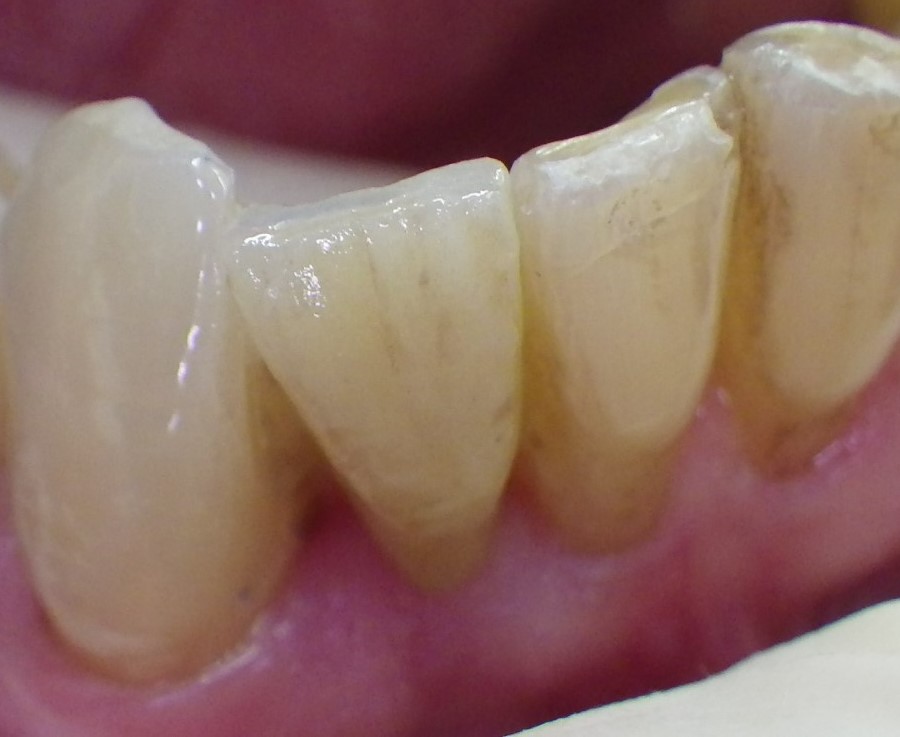Fixed restorations
Fixed restorations are a part of prosthetics. In particular crowns (though they often do not replace a tooth but only supplement the lost tooth structure of an existing tooth) and bridges as well as bar restorations are described as fixed restorations. Implants replace "fixed" tooth roots in the bone but are not defined as fixed restorations.
In contrast to removable restorations, fixed restorations are rigidly bonded to teeth or implant abutments using adhesive retention or cementation. Restorations, which are fixed for the patient (e.g. by screw-retention or temporary cementation) but are designed to be removable by the dentist, are called "operator-removable". If restorations, which are removable for the patient, are retained on fixed crowns they are called fixed-removable restorations.
A minimum of four periodontally healthy abutments in a favourable alignment (quadrangular) is essential for ensuring stable, statically balanced support per jaw for purely fixed restorations. However, for purely implant-borne fixed restorations in particular, a minimum of six abutments is required in the mandible and even eight abutments in the maxilla due to the lower bone quality. An increase in the number of abutments (e.g. using implants) and also a combination using removable (tissue-borne) restorations can help relieve the natural residual teeth.
 Pontic 42, labial view of single-winged bridge
Pontic 42, labial view of single-winged bridge
 Pontic 42, clinical view of single-winged bridge
Pontic 42, clinical view of single-winged bridge
Features of fixed restorations are periodontal support on abutments, a rigid, immovable connection with the abutment and the subjective sensation of patients of wearing "their own teeth". Care and repair are more difficult compared with removable versions and extending the restoration is generally impossible – especially in the case of (primary) connections with adjacent single crowns for increasing the stability. This is why the previously generally accepted superiority of fixed restorations should be qualified according to each individual case.
A fixed restoration is not only impossible in edentulous cases but also with implants if, as a result of massive bone resorption, the distance between the alveolar ridge level and occlusal plane is too large, which would lead to an excessively forceful leverage effect.
Fixed restorations can be fabricated provisionally (temporary; generally using acrylic and rarely from metal or ceramic), e.g. for testing a new occlusal relationship or for bridging the time required for fabrication of the permanent restoration or other treatment.
Individual components of fixed restorations can be prefabricated (e.g. attachments, other connectors or implant abutments); these can remain unchanged or they can be customised. Final (permanent) fixed restorations are fabricated either from a single material, combinations of materials or by joining different materials using very different procedures, e.g. casting, milling, soldering, welding, grinding, sintering (CAD-CAM), pressing or electroforming.
Temporary luting (short, medium or long-term) can be used for trying in fixed restorations.
PROBIEREN SIE ES EINFACH AUS !!!
Von uns erhalten Sie professionelle Unterstützung.
Treten Sie mit uns in Kontakt oder nutzen Sie unser Kontaktformular.
Wort des Tages
| Deutsch | Englisch |
|---|---|
| Längsriss | longitudinal crack |
Schwerpunkttext des Monats
Vergrößernde Optik in der Zahntechnik Vergrößernde Optik in der Zahntechnik |
